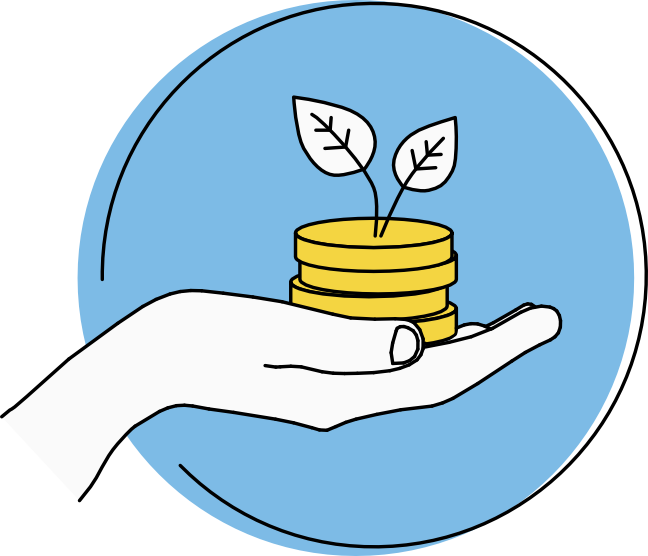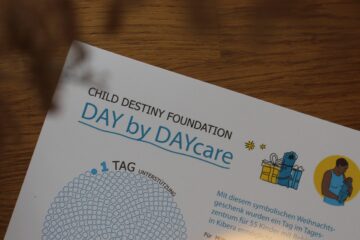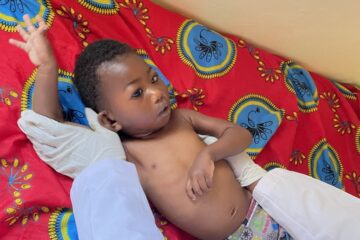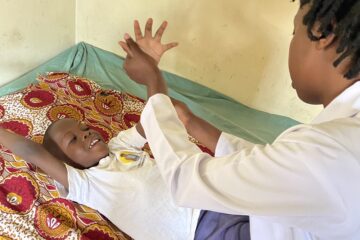A short introduction to microcredit : the example of Kenya
Text von Zoé Paris
Ende der 1980er Jahre zog eine Mutter mit ihren acht Kindern aus Rarieda, einem ländlichen Dorf im Westen Kenias, das von einer Hungersnot heimgesucht wurde, nach Nairobi, um bessere Lebensbedingungen zu finden. Nachdem sie verzweifelt versucht hatte, in der Stadt Arbeit zu finden, landete sie in Kibera. Um ihre Kinder zu ernähren, arbeitete die Mutter als Hausiererin und nahm Jobs im ganzen Slum an. Ihre Mittel reichten jedoch nicht aus, um das Schulgeld ihrer Kinder zu bezahlen. Entschlossen, ihren Kindern eine bessere Zukunft zu ermöglichen, gründete sie mit anderen Müttern aus Kibera einen informellen Kreditkreis. Sie legten ihre Mittel zusammen und liehen das Geld jede Woche einer anderen Mutter. Dies ist die Geschichte von Kennedy Odedes Mutter. Odede ist die Älteste von acht Kindern. Mit 21 Jahren gründete er die Organisation Shining Hope for Communities (SHOFCO), die größte Graswurzelbewegung Kiberas. SHOFCO ist eine Plattform für gesellschaftliche Interessenvertretung, die Frauen und Mädchen die Entwicklung unternehmerischer Fähigkeiten ermöglicht. In seinem gemeinsam mit seiner Frau Odede verfassten Buch „Find Me Unafraid: Liebe, Verlust und Hoffnung in einem afrikanischen Slum“ erinnert er sich daran, wie dieser Kreis kleiner Kreditvermittler sein Leben drastisch veränderte (Odede und Posner, 2016).

In diesem Artikel untersuchen wir die wichtigsten Formen von Mikrokrediten in Kenia und ihre Anwendung in einkommensschwachen Regionen wie Kibera. Wir werden die von den Müttern der CDF gegründete Tischbanking-Gruppe näher beleuchten.
The rise of microcredit: between survival and empowerment
Worldwide, the financial sector might well be the most regulated industry, and Kenya is far from being an exception. In fact, the Kenyan formal banking institutions are considered to be more regulated than other comparable African countries
To fill the gap of lending opportunities that concerned a huge chunk of the Kenyan population, microcredit practices like informal saving groups and digital credit became increasingly widespread. We can define microcredit as small loans offered to individuals or groups who are typically excluded from conventional banking services. These loans are meant to support businesses, improve living conditions, or stabilize consumption during economic shocks. Microcredit is particularly relevant to empower women, as they are much often excluded from any ownership over land or property. In fact, only 1% of land is owned and controlled by women, according to Kenya’s Ministry of Land. In addition, women remain at the forefront of geopolitical and economic crises and income volatility, and microcredit provides them with a safety net to smooth such income during hard times
Microcredit in Kenya has a unique history deeply intertwined with mobile money technology.
The 2012 launch of M-Shwari, a service integrated with Safaricom’s M-Pesa launched only 5
years prior, revolutionized access to credit. Unlike traditional microfinance, M-Shwari (shwari
meaning calm in Swahili) offers fully digital micro-loans directly through mobile phones. The
process is collateral-free, and accessible even to those without formal banking histories.
Today, we see this innovative practice benefitting primarily individuals and communities in
informal settlements in and around urban areas. Digital microcredit has specifically
benefitted women, who use microcredit to start or expand their business.
Informal saving groups, a much more lenient lending method which relies on members’ joint
liability and trust as collateral, have saved businesses and even lives of informal workers
and slum vendors, specifically women. During the Covid-19 pandemic, countless numbers of
slum vendors relied on saving groups to support their business in a time of economic crisis.
Most financial institutions drastically reduced their support to MSMEs
1
, in an
already-precarious time as only 20% of them had licenses and could access formal credit
(Njagi, 2021). The guidelines are often similar : members of a savings group pool together
agreed amounts of money which are loaned out to members of the group who are most in
need. The money is often invested in the recipient member’s business, who pays the money
with a small percentage of interest (5 to 10%) back in the short to medium term. Equally
concerned by the pandemic, CDF's mothers created their own table banking group in 2020.
This group has a double purpose. The first is to enable mothers to make important
purchases for their business and/or family. The second is to craft a sense of community
around mutual empowerment and assistance. CDF provides no financial assistance to this
group, and the latter continues to be self-run and experiences no loan defaults.
The role of microcredit in addressing structural poverty
Beyond small-scale impact on the livelihoods, researchers like Abhijit Banerjee and Esther Duflo explored the question of microcredit to escape informality. While not their initial or inherent goal, microcredit practices have addressed the structural issues of poverty by primarily helping marginalized communities and households. Yet in their 2015 paper “The Miracle of Microfinance: Evidence from a Randomized Evaluation”, a randomized control trial performed in India, Banerjee et al. noted no positive correlation between the business creation supported by microcredit and increased consumption, education or health levels of beneficiaries (Banerjee et al., 2015). Concretely, they saw no significant difference in the consumption, education and health levels of beneficiaries of microcredit and nonbeneficiaries after 2 years.
Microcredit remains an essential tool, and sometimes a lifeline, to slum vendors and dwellers. It is also an essential tool of empowerment for women who have unequal access to tangible resources and to work opportunities. However, it cannot alone accompany households and communities out of intergenerational poverty. While platforms like M-Shwari and lending groups help women, households, and communities stabilize their daily lives, they rarely transform small businesses into thriving enterprises or help children like Kennedy Odede escape the often terrible slum living conditions. Structural changes and policy interventions providing greater credit access to marginalized groups need to be put in place for sustainable change to happen. Thus, while microcredit is undeniably a powerful tool for empowerment, it is not a silver bullet for economic development.
Sources
- Banerjee, A., Duflo, E., Glennerster, R., & Kinnan, C. (2015). The miracle of microfinance?
Evidence from a randomized evaluation. American economic journal: Applied economics,
7(1), 22-53. - Cook, T., & McKay, C. (2015). How M-Shwari works: The story so far. Consultative group toassist the poor (CGAP) and financial sector deepening (FSD).
- Kulb, C., Hennink, M., Kiiti, N., & Mutinda, J. (2016). How does microcredit lead toempowerment? A case study of the Vinya wa Aka group in Kenya. Journal of InternationalDevelopment, 28(5), 715-732.
- Mathuva, D. (2022). Savings groups in Kenya: A Contextualised literature review on savingsgroups in Kenya. Transforming Africa: How Savings Groups Foster Financial Inclusion, Resilience and Economic Development, 163-178.
- Odede, K. (2024, September 6). Empowered Women Can Transform the World’s PoorestCommunities, Time https://time.com/7016128/women-uplift-poorest-communities/
- Odede, K., & Posner, J. (2016). Find me unafraid: Love, loss, and hope in an African slum. Ecco.
- Njagi, D. (2021, May 4) Kenya’s slum vendors rely on savings groups to survive Covid-19,Devex https://www.devex.com/news/kenya-s-slum-vendors-rely-on-savings-groups-to-survive-covid-19-99741


